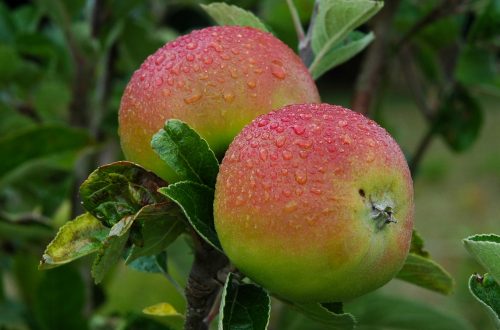The apple tree belongs to a genus of small deciduous trees or shrubs of the rose family.
You are viewing the mobile-adapted version of the page.
The one for tablets, laptop and desktop also provides general information, such as origin and cultivation.
Apple tree (Malus domestica) belongs to a genus of small deciduous trees or shrubs of the rose family. Malus includes the apple tree and ornamental apples. The apple grows in the temperate climate zone. The tree generally blooms from mid-April to the end of May. Apple blossom and the young fruits are sensitive to frost damage.
Apples are ready to pick when you can bend or twist the apple on the tree. When it’s easy to bend or twist, then the apples are ready to pick. As apples ripen, the seeds turn from white to black: apples with brown seeds are ready to pick; those with black seeds ready to eat.
Bugs
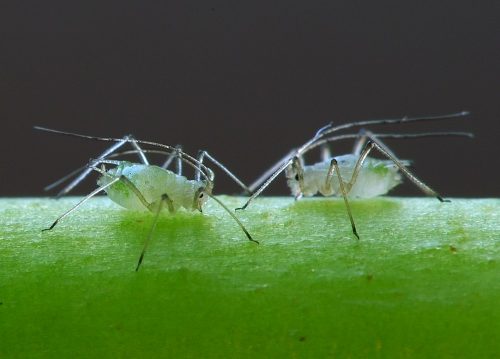
Deformed and crumpled leaf: aphid.
Dot-shaped spots on the leaf; mites on the underside: Red spider mite (Tetranychus urticae).
Feed on the budding buds and young leaves: caterpillars of the winter moth (Operophtera brumata).
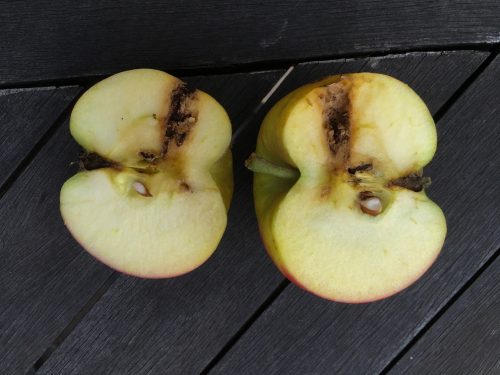
Worm-eaten fruits early in spring, red spot around the borehole: codling moth (Cydia pomonella).
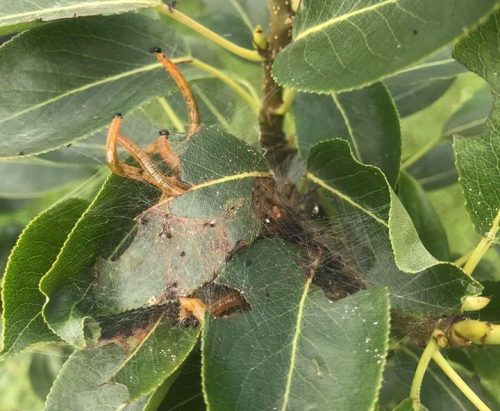
Spiders with orange caterpillars between the leaves: larvae of the Little Ermine (Swammerdamia pyrella), an ermine moth.
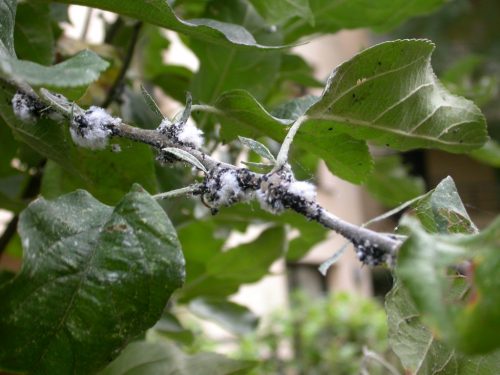
White sticky fluff, later followed by galls and woody outgrowths: Woolly apple aphid (Eriosoma lanigerum).
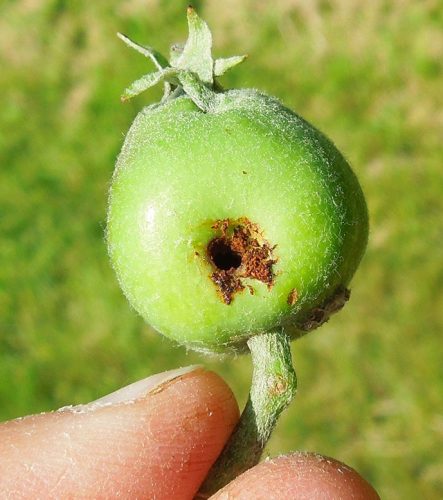
Early in spring 2 mm large pale green caterpillar-like larvae with a black head, later brown, at the newly formed apples.
Holes of 2 to 3 mm in the apple with orange-brown apple pulp around the drill hole: larvae (caterpillars) of the apple sawfly (Hoplocampa testudinea).

Pale green caterpillars feed on the leaf margins. The caterpillars have a row of shiny black dots on the side: Apple leaf sawfly (Pristiphora maesta).
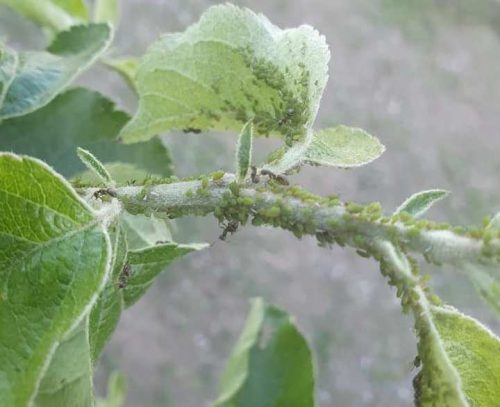
Green aphids on new shoots – especially in summer. The new shoots curl through the aphids and are somewhat inhibited in growth. In early spring they are only slightly visible: Green apple aphid (Aphis pomi) .
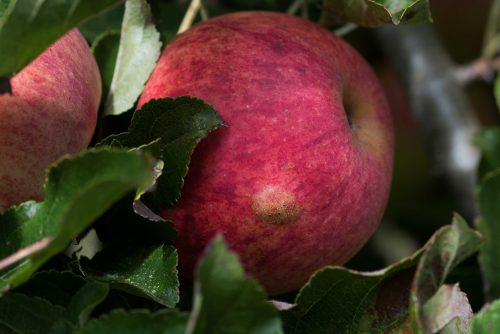
Rough elevations appear on ripening apples: Common green capsid (Lygocoris pabulinus). Can’t hurt, only the skin of the apple is a bit affected.
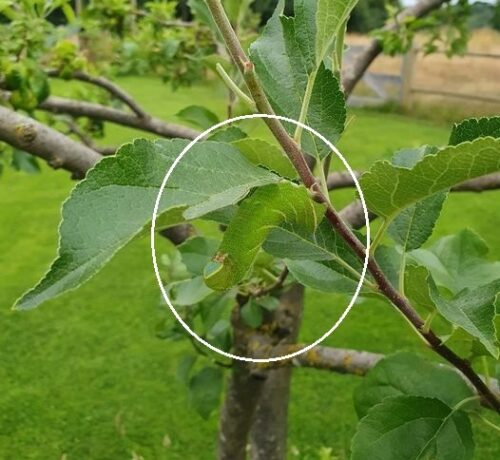
Large caterpillar hidden between the leaves: caterpillar of the Eyed hawk-moth (Smerinthus ocellatus).
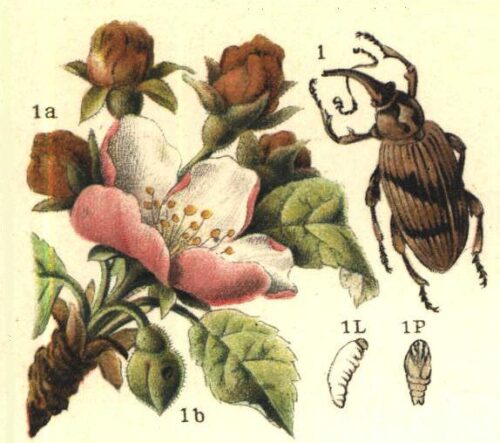
Apple blossom is affected and dries up in early spring: small, grey-brown beet
Fungi & diseases
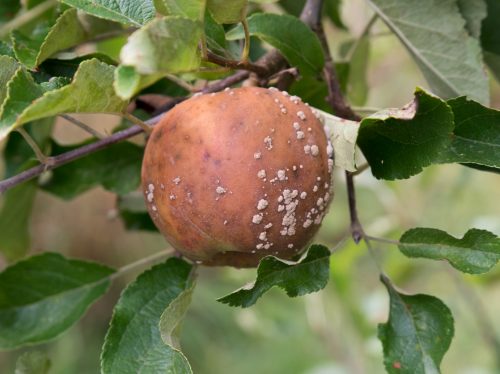
Brown coloring apples with fungal spores: Brown rot (Monilinia spp.).
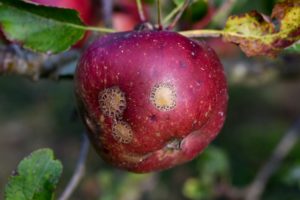
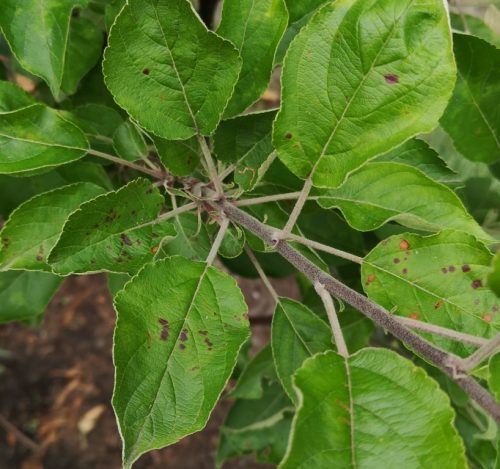
From light green to brown discolouring spots on the leaf, apples stop growing, get dark spots with star-shaped cracks: apple scab (Venturia inaequalis) .
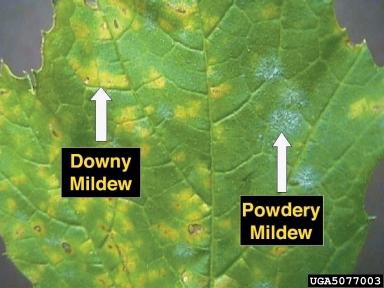
Fungus on young leaves and blossom: Powdery mildew (Ascomycota phylum) or Downy mildew, a water mould (Peronosporaceae).
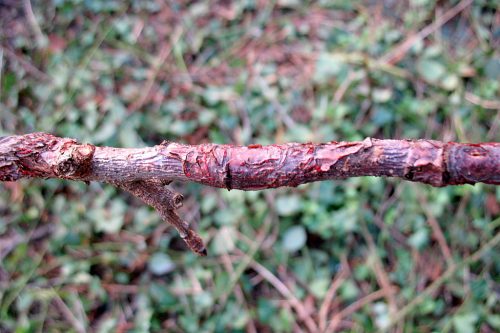
Bark tears, branch withers and red fungal fluff appears: Apple Canker (Neo
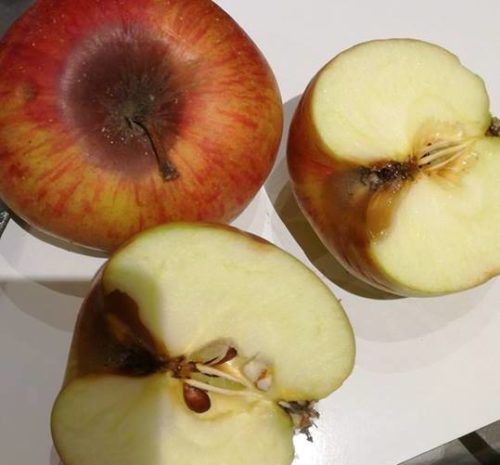
End rot and rotten spots on apples around the stem: Neonectria (Neo
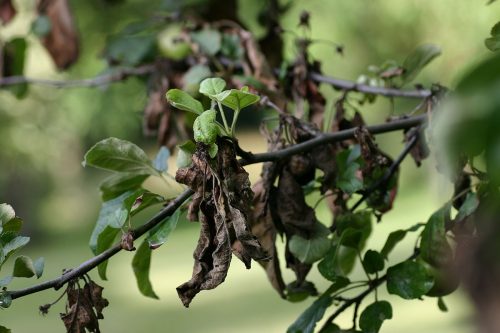
Blossom, leaf, branch and twig turn brownish-black and thickened spots shrivel: fire blight (Erwinia amylovora).
A colorful collection of grown twigs: witches broom (Taphrina betulina).
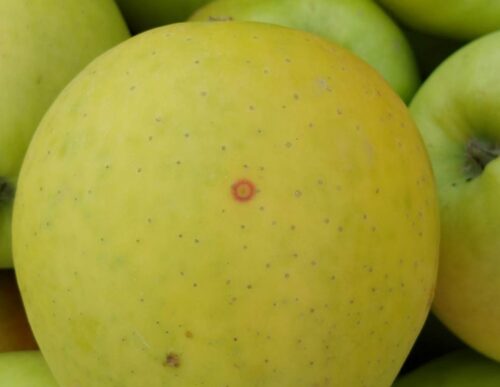
A red dot develops on the skin of the apple during storage or in storage, which quickly enlarges and develops into a round brown spot: Bull’s eye rot (Neofabraea spp.).
Leaves take on a silvery sheen: silver leaf (Chondrostereum purpureum).
Other
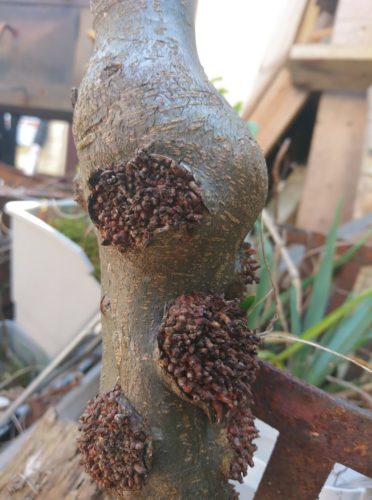
Small root tips are formed on the trunk. A moist environment, prolonged rain and a lot of shade promote the development of burr knots. Trees with burr knots are more susceptible to fire blight and Nectria canker since the root tips provide many gateways for bacteria and fungal spores. In dry and sunny weather, cut out the burr spots generously and cover with wound balm.
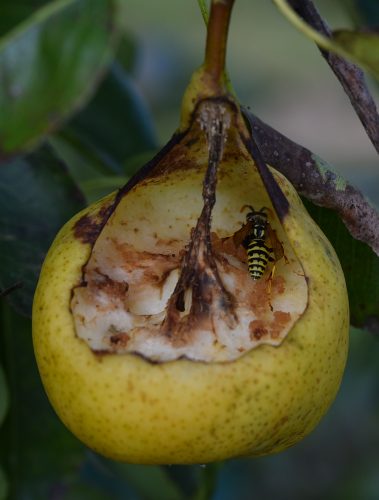
Wasps sometimes attack fruit.

Deepened, brown spots on the apple. Under those spots, the apple is brown and corky; the spots often taste bitter: bitter pit. Mostly caused by calcium deficiency .

No leaves on young apple trees; the roots are eaten away: voles .
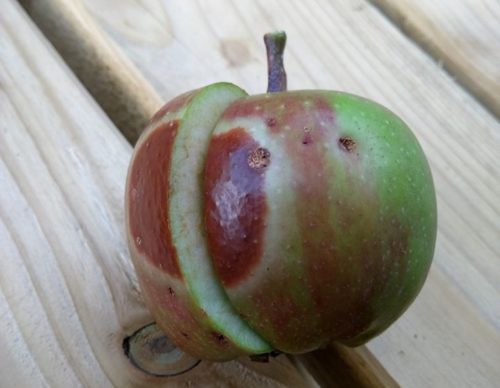
During hot summer weather (temperatures above 30ºC), red spots appear on the ripening apples: sunburn .
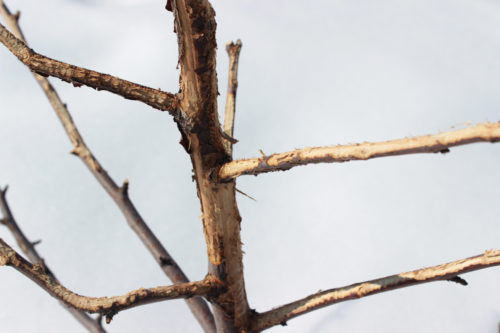
In winter, hares, rabbits and roe deer sometimes like to gnaw on the branches and trunk of the apple tree.
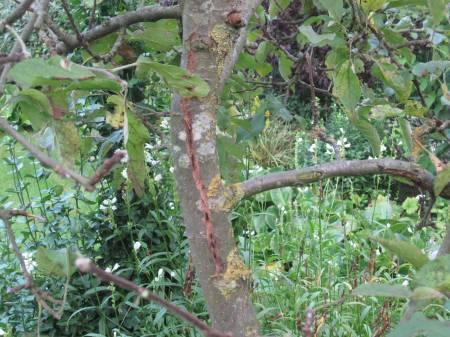
Vertical cracks in the bark of the trunk: frost cracks.
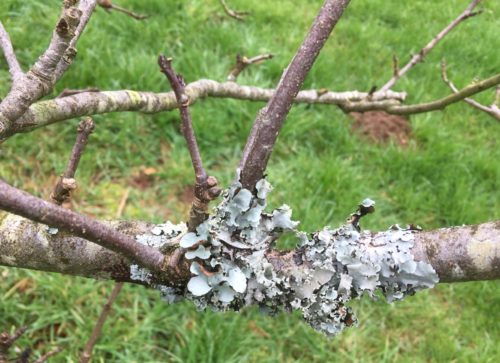
Lichen on the branches.
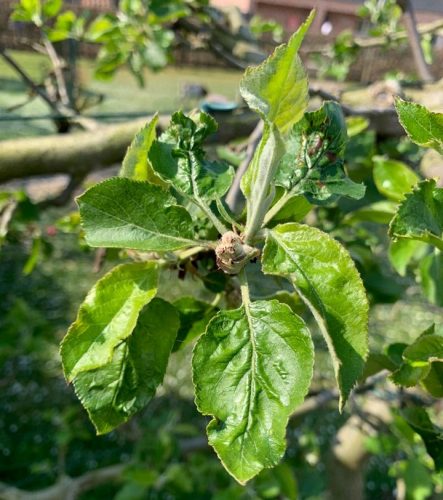
In early spring: buds dried up, pale brown spots on young leaves: damage from spring frost.
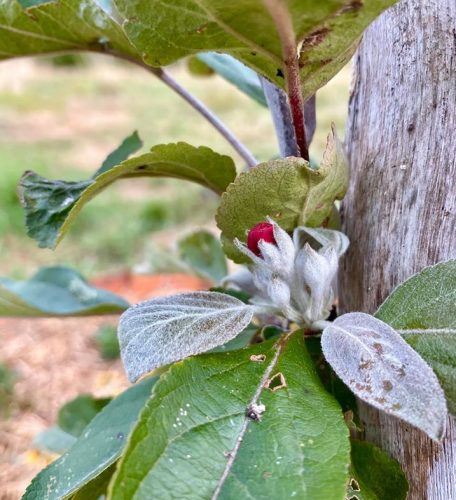
After the spring, when the apples start to grow, the tree blooms sometimes with some blossom here and there. Remove this blossom, preferably before the flowers have opened. This blossom does not lead to fruit but might form an entrance for fire blight.
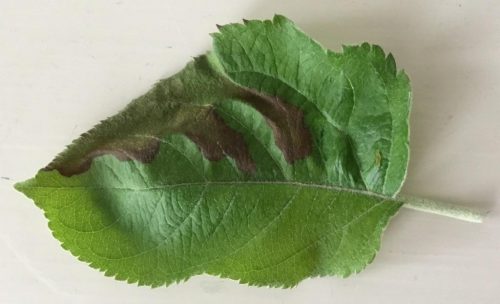
In a period of summer heat and drought, the leaves dry out: drought damage.
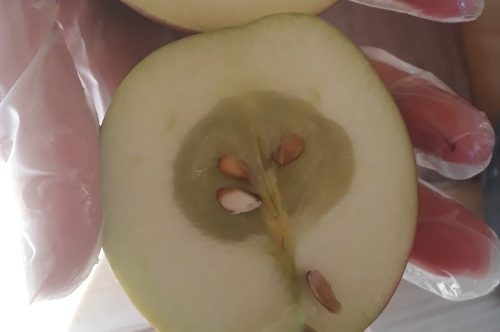
Glassy, translucent spots appear in the flesh around the core: the cells leak cell fluid. In severe cases, the glassiness has progressed to the point where it is visible on the skin and the apple will turn brown inside: internal browning. The cause is often calcium deficiency. See also calcium deficiency.
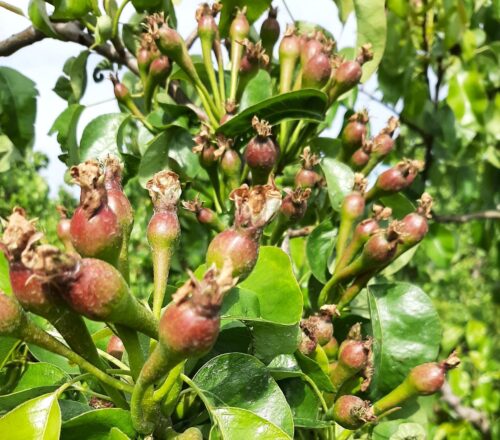
Fruiting follows after flowering of the fruit trees. Usually there is an excess of small fruits. Between the end of May and mid-June, however, many apples fall off: the June drop. A natural process in which the tree rejects all weak fruits. See also fruit thinning .

